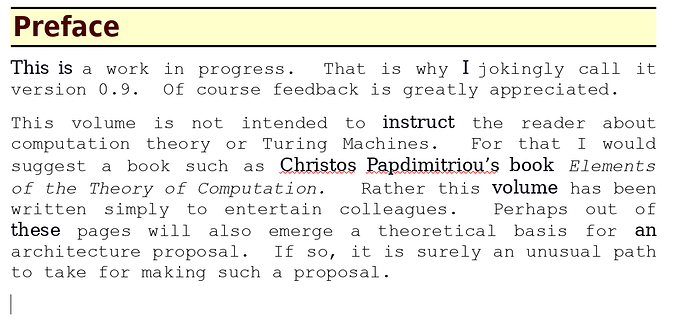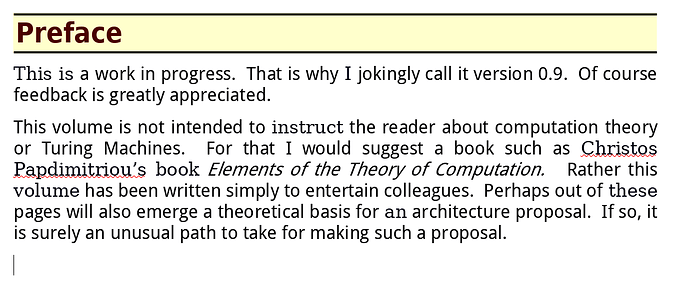The behaviour you experience is a clear indication your document is formatted with a mixed strategy *a la * Word.
Your paragraphs have received paragraph styles which effectively allows you to change the font from a single location (the style definition). However, the formatting variants you need inside a paragraph have been done with direct formatting (like Ctrl+B for bold or Ctrl+I for italics) instead of character styles (like Strong Emphasis translated as bold or Emphasis translated as italics).
You also have stray direct formatting in “This is”, “I”, “instruct”, … There is no way to distinguish this stray direct formatting from the meaningful one like Elements of the Theory of Computation. Consequently, when you Ctrl+M to clear direct formatting, everything is wiped out. This would not happen if you had styled your sequences with character styles because these styles live in a different layer than direct formatting.
It also seems you applied direct formatting in various parts of your document over Text Body because you see justification changes, tables messed up, … Text in tables should be formatted Table Contents.
Remember styles are your friends. Define a style for each purpose (Text Body for common text, a style for comment paragraphs, a style for definition paragraphs, one for TODO paragraphs, one for citations, …). Thus when your change style attributes, they only impact the intended paragraphs. The same can be said for sequences inside paragraphs formatted by character styles.
Avoid direct formatting. Its only legitimate use is adding manual page breaks or restarting list numbering. Everything which can be done through a smartly crafted style should be applied with a style. This leaves very few things to direct formatting. Direct formatting is the main obstacle to formatting tuning through style optimisation.
To show the community your question has been answered, click the ✓ next to the correct answer, and “upvote” by clicking on the ^ arrow of any helpful answers. These are the mechanisms for communicating the quality of the Q&A on this site. Thanks!


